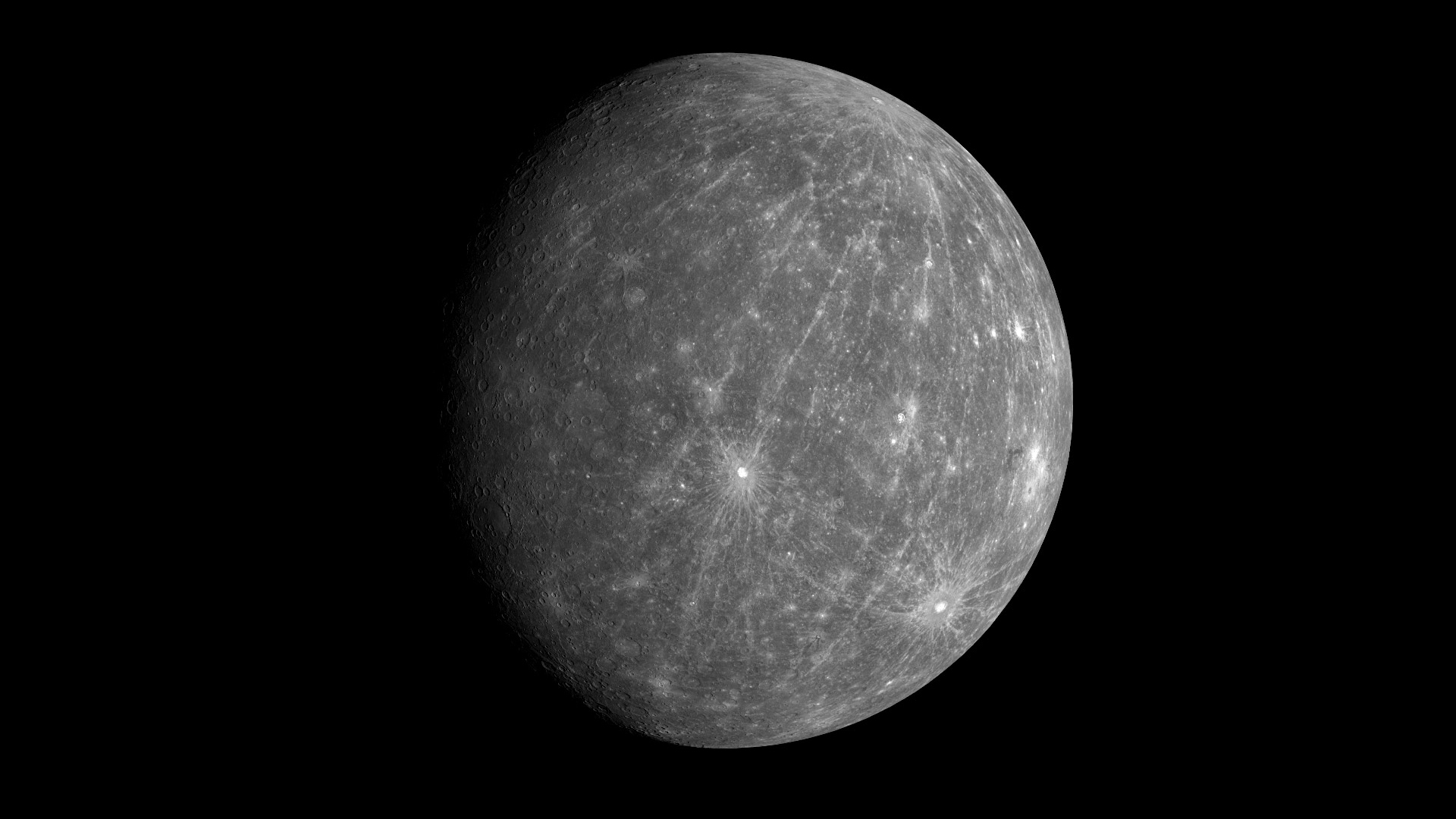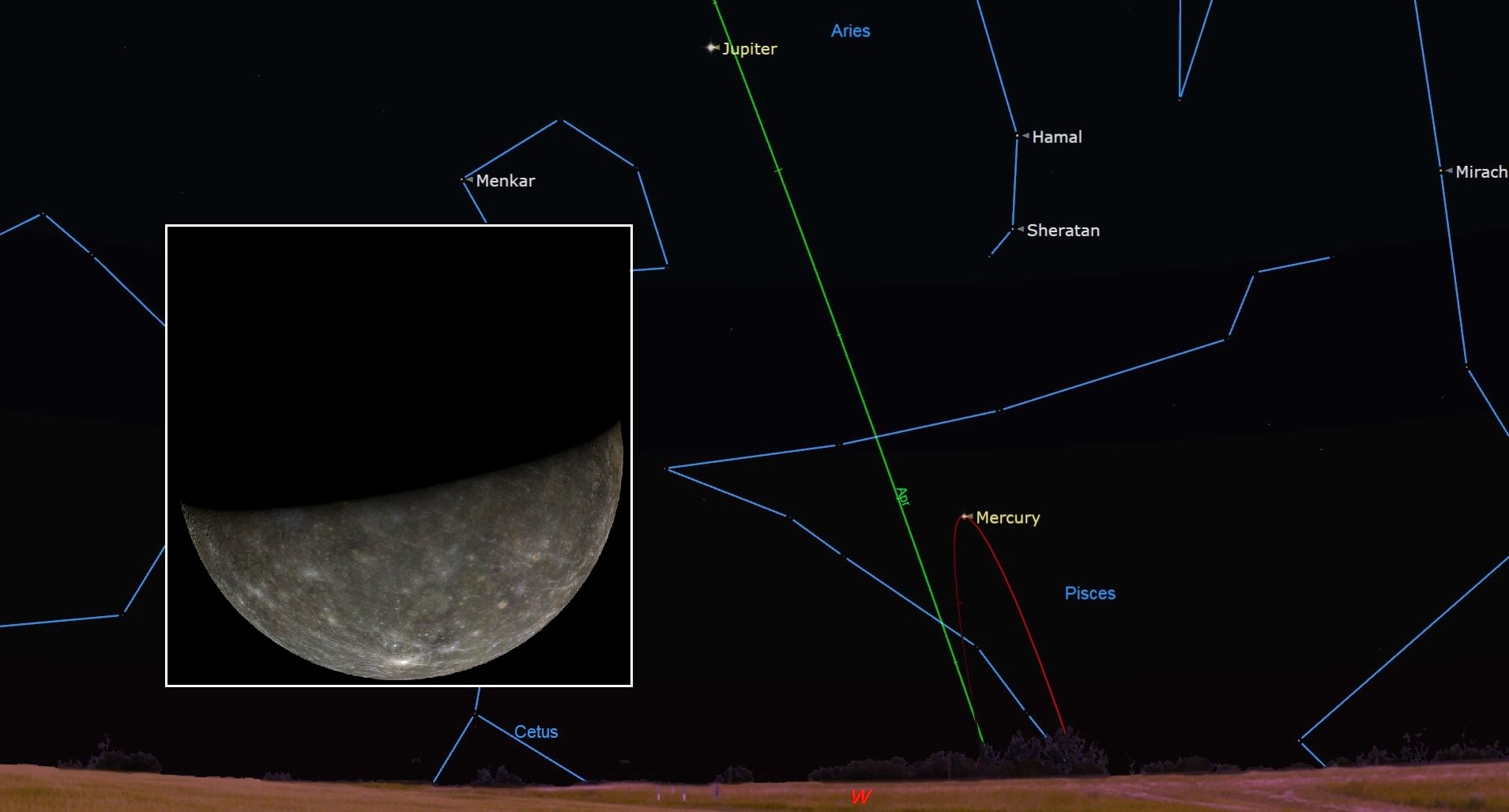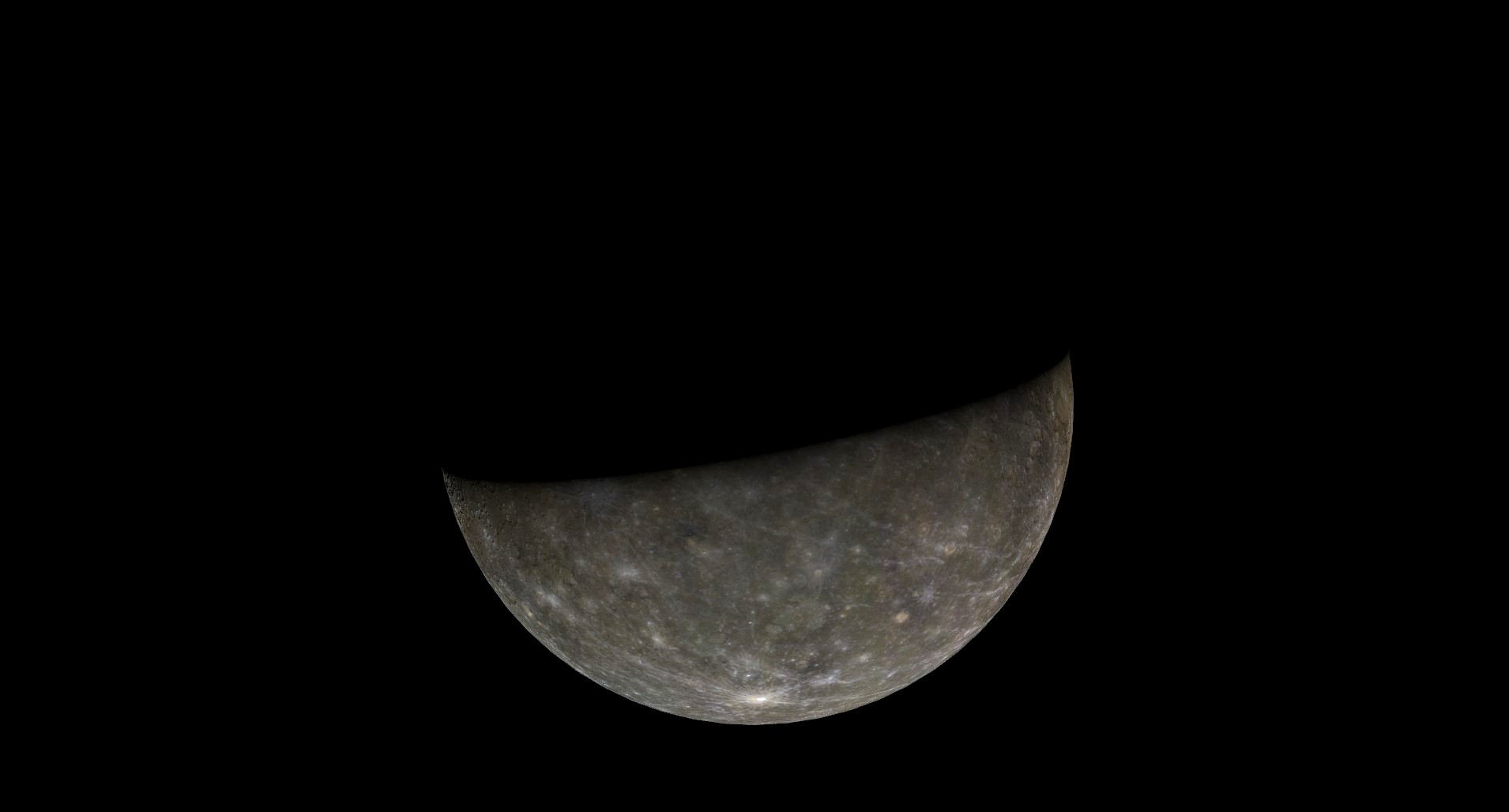
If there is one thing that has bothered me the most in more than 50 years of involvement in astronomy outreach, it is the way that most astronomy books give the impression that the planet Mercury is a very challenging, if not almost impossible object to see. It has, in fact, earned this planet the nickname as the "elusive planet."
Here, for example, is a passage taken from the book "The ABC's of Astronomy" by Roy A. Gallant (Doubleday & Company, Inc. 1962): "Mercury is the most difficult planet to observe, has very little to offer, and is difficult to see because it is so small and so close to the sun."
This certainly doesn't sound very inviting for someone who might want to try and see Mercury for themselves. And yet, the viewing prospects are not as grim as this passage suggests. In fact, on certain occasions, Mercury is not really so elusive at all. You simply must know when and where to look, and find a clear horizon. It is important, for instance, that Mercury be positioned as nearly directly above the sun's place as possible, a condition that is best fulfilled just after sunset in the late winter or early spring and before sunrise in autumn or early winter.
Related: Night sky, March 2024: What you can see tonight
Mercury is called an "inferior planet" because its orbit is nearer to the sun than the Earth's. Therefore, it always appears from our vantagepoint to be in the same general direction as the sun. Thus, relatively few people have set eyes on it; there is even a rumor that Copernicus, living in northern Poland never saw it. Yet it's not really hard to see. You simply must know when and where to look, and find a clear western horizon.
A three-week window

Need a telescope to get out there and see Mercury? We recommend the Celestron Astro Fi 102 as the top pick in our best beginner's telescope guide.
And for those living in the Northern Hemisphere, right now we're in the midst of a fine "window of opportunity" for viewing Mercury in the evening sky. That window, which will close after March 31, will continue to provide good chances to see this so-called "elusive planet" with your own eyes.
Currently, Mercury is visible about 45 minutes after sunset, very near to the western horizon. Yet, if your sky is clear and there are no tall obstructions to your view (like trees or buildings) you should have no trouble in seeing it as a very bright "star" shining with just a trace of a yellowish-orange tinge. At the moment, Mercury is shining at a very bright magnitude of –1.3. In fact, among the stars and planets, Mercury now ranks a very respectable fourth, behind Venus, Jupiter, and Sirius (the brightest star).
In the evenings that follow, Mercury will diminish — slowly at first — in brightness, but it will also be arriving at its greatest elongation, 19 degrees to the east of the sun, on March 24. Shining at magnitude -0.1 (equal to the similarly hued star Arcturus in Boötes), Mercury will appear 22 degrees below and to the right of Jupiter. Your clenched fist held out at arm's length measures roughly ten degrees in width. So, Mercury will be positioned just over "two fists" to the lower right of Jupiter. Mercury will also be setting more than 90 minutes after the sun. In fact, from March 20 to 28, it will be setting after the end of evening twilight in a dark sky.
As a result, this will be Mercury's best evening apparition of 2024.

Mercury, like Venus, appears to go through phases like the moon. During early-March, just when Mercury started appearing very low in the western twilight sky, it was a nearly full disk, which is why it currently appears nearly as bright as Sirius. By the time it arrives at its greatest elongation, it will appear 43-percent illuminated, and the amount of its surface illuminated by the sun will continue to decrease in the days to come. So, when it begins to turn back toward the sun's vicinity after March 24, it will fade at a rather rapid pace.
In fact, on the evening of March 31, Mercury's brightness will have dropped to magnitude +1.4; a trifle dimmer than the star Regulus in Leo and only 1/12 as bright as it is now. In telescopes it will appear as a narrowing crescent phase. This, in all likelihood will be your last view of it, for the combination of its rapid fading and its descent into the brighter sunset glow will finally render Mercury invisible by the start of April.

More than a thousand degrees difference!
In old Roman legends, Mercury was the swift-footed messenger of the gods. The planet is well named for it is the closest planet to the sun and the swiftest of the sun's family, averaging about 30 miles per second; making its yearly journey in only 88 Earth days.
Interestingly, the time it takes Mercury to rotate once on its axis is 59 days, so that all parts of its surface experiences periods of intense heat and extreme cold. Although its mean distance from the sun is only 36 million miles (58 million km), Mercury experiences by far the greatest range of temperatures: 790° F (420° C) on its day side; -270° F. (-170° C) on its night side.
Dual Identity
In the pre-Christian era, this planet actually had two names, as it was not realized it could alternately appear on one side of the sun and then the other. Mercury was called Mercury when in the evening sky, but was known as Apollo when it appeared in the morning. It is said that Pythagoras, about the fifth century B.C., pointed out that they were actually one and the same.
If you're hoping to catch a look at Mercury ,our guides to the best telescopes and best binoculars are a great place to start. If you're looking to snap photos of the night sky in general, check out our guide on how to photograph the planets, as well as our best cameras for astrophotography and best lenses for astrophotography.
Editor's Note: If you snap an image of Mercury and would like to share it with Space.com's readers, send your photo(s), comments, and your name and location to spacephotos@space.com.
Joe Rao serves as an instructor and guest lecturer at New York's Hayden Planetarium. He writes about astronomy for Natural History magazine, the Farmers' Almanac and other publications.







